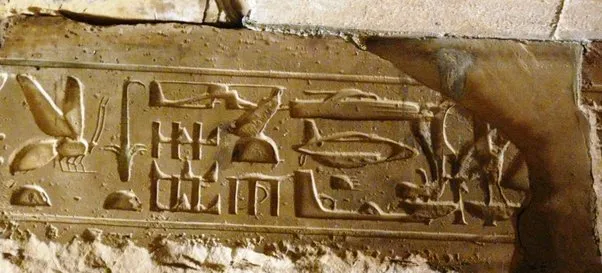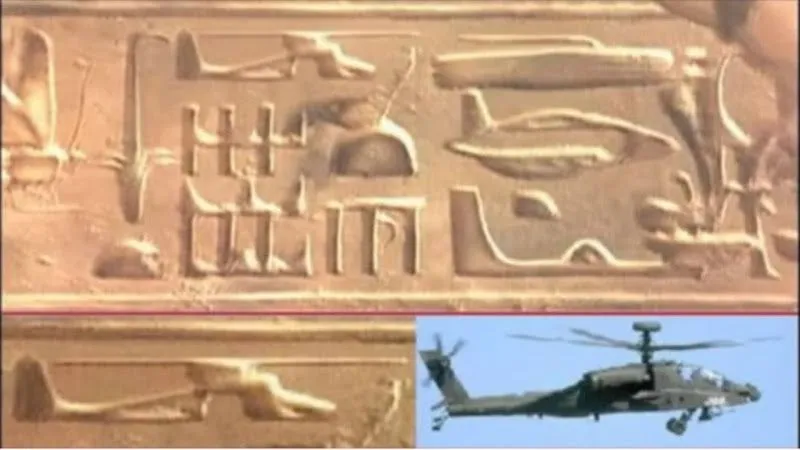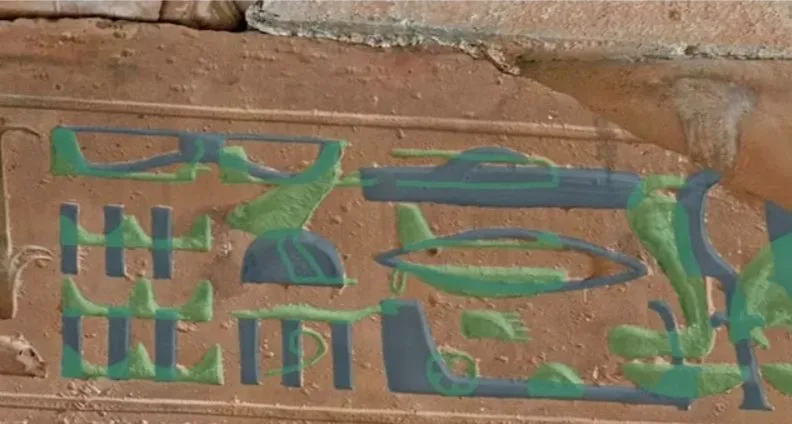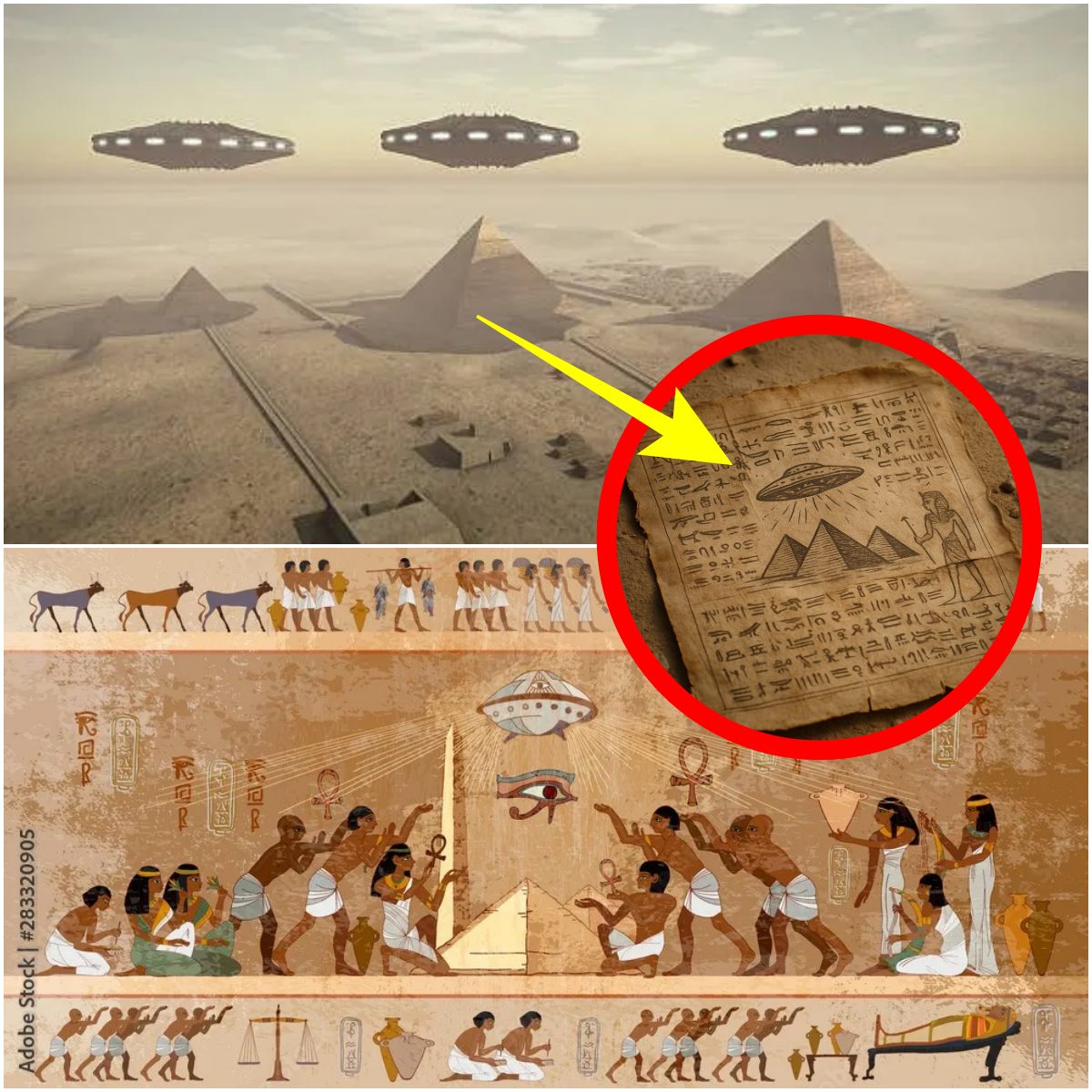Ancient Enigma: Mysterious Egyptian Hieroglyphs Depict Helicopters, Airplanes, and Tanks
Depictions resembling helicopters, airplanes, and even tanks have stirred the imagination of archaeologists and enthusiasts alike, appearing on ancient Egyptian artifacts and temple walls. These puzzling images, often embedded within intricate hieroglyphics, raise provocative questions about the technological understanding and symbolic language of one of the world’s most advanced ancient civilizations.
Ancient Egypt, celebrated for its monumental pyramids, complex religious systems, and remarkable advancements in architecture and astronomy, thrived along the fertile banks of the Nile River for thousands of years. Its elaborate artistic heritage—visible through hieroglyphic texts, tomb murals, and ceremonial artifacts—offers a detailed record of daily life, spirituality, and dynastic history.
Yet among these relics, certain depictions have sparked intense debate. Carved onto the walls of temples like Abydos and found in various other artifacts, some figures appear to mirror modern machines—objects resembling helicopters, jet aircraft, and armored vehicles. These forms, with rotors, cockpits, and fuselage-like shapes, have puzzled both mainstream scholars and fringe theorists.
The interpretation of these images remains controversial. Most Egyptologists maintain that the carvings are the result of overlapping hieroglyphs caused by erosion, re-carving, or artistic layering over centuries—common practices in ancient Egyptian temples. According to this view, what may appear to be advanced technology is, in fact, a visual coincidence shaped by natural decay and complex writing systems.
However, alternative thinkers propose more speculative explanations. Some assert that these depictions may be allegorical, representing divine chariots or symbolic vessels associated with the gods. Others go further, suggesting a connection to the “ancient astronaut theory”—the idea that extraterrestrial beings visited early civilizations, sharing technological insights that found their way into art and myth.
While such theories captivate the public imagination, scholars urge caution. Ancient Egyptian society operated within a vastly different technological and cultural paradigm. What appears futuristic to the modern eye may have held entirely different meanings for ancient artisans and scribes. Moreover, the phenomenon of pareidolia—the human brain’s tendency to perceive familiar shapes in random patterns—often plays a role in how we interpret ancient art.
Scientific analysis continues to shed light on these mysterious images. Researchers use digital reconstruction and contextual studies to understand how these unusual carvings fit within the broader framework of Egyptian temple iconography and inscriptions.
The enigmatic figures etched into ancient Egyptian monuments remind us of how much we have yet to understand about the past. Whether symbolic, coincidental, or something more, they offer a compelling glimpse into the complexity and richness of Egyptian visual culture. As experts continue to study these artifacts, they not only unravel the mysteries of the past but also challenge modern perceptions of ancient wisdom and creativity.
While definitive answers remain elusive, the enduring fascination with these depictions ensures they will remain a topic of inquiry and wonder for years to come.










